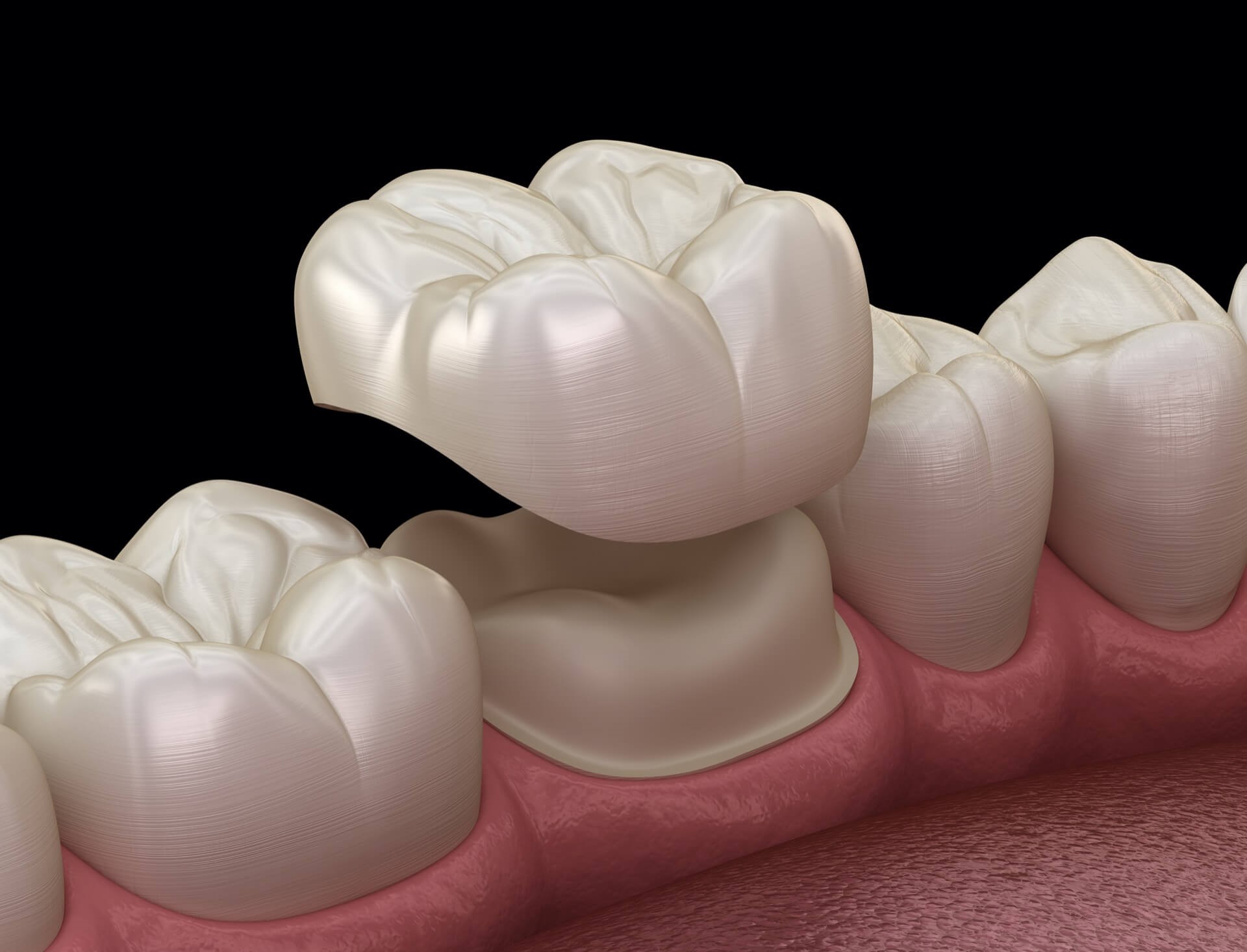
Dental crowns are caps that are put on top of broken or decayed teeth. When fillings fail to fix the situation, crowns are utilised to preserve, cover, and restore the contour of your teeth. Metals, porcelain, resin, and ceramics are all options for dental crowns. They usually don’t need any attention over time, except for ensuring consistent dental hygiene.
A dentist might propose a dental crown for a person for a variety of reasons. A crown can avoid additional damage and restore functioning to a tooth that is weak, decayed, or fractured. A crown may be used to conceal and support a big filling with little natural tooth remaining around it. A crown can also be used to conceal discoloured or malformed teeth, as well as to safeguard the teeth of persons who are unable to take proper care of their oral hygiene.
What are Dental Crowns?
Dental crowns are tooth-shaped “caps” that fit atop your natural tooth. Consider it a snug cap for your teeth. The crown improves the shape, size, sturdiness, and look of the tooth. The dental crown is a cap that surrounds the exposed section of your tooth and is glued into position. Your teeth might get worn over time. This can occur for several causes, including dental decay, trauma, or regular use. Your teeth’s shape and size can deteriorate. This is where Dental crowns help.
Dental Crowns Materials type
Metal Dental Crown
Gold, platinum, cobalt-chromium, and nickel-chromium alloys can all be used to make metal crowns. Such crowns are the most durable and long-lasting of all the materials. They rarely break, but their colour and the exorbitant cost of some metals, such as gold, may lead consumers to look for another solution.
Stainless steel
Temporary stainless steel crowns are frequently utilised while a permanent crown is being created. They’re also utilised in youngsters to cut down on the number of visits required to care for a decayed primary tooth until the tooth comes out organically and the adult tooth takes its place.
Porcelain fused
Porcelain fused to metal crowns can be made to match the colour of your exposed teeth. If the crowns are indeed being attached to a long bridge with a lot of supporting structure, these are a wonderful alternative. Porcelain crowns, on the other hand, chip readily and can cause damage to the teeth on either side.
The best natural colour matching is achieved with all-ceramic or all-porcelain crowns. As a result, they can be utilised on both the front and rear teeth.
While all-resin crowns are less expensive, they wear down faster and are easier to destroy than porcelain-fused-to-metal crowns.
Things you need to know about Dental Crowns
- In typical, a very well, high-quality porcelain crown lasts 15 years. It’s worth noting, though, that the patient’s lifestyle habits play a role in how prolonged a crown seems to last. The lifespan of dental crowns is dependent on proper oral hygiene. Furthermore, people who pound their teeth, bite the cuticles, or eat hard candy are much more likely to require new crowns well before 15 years.
- The procedure is carried out after the patient is given a little amount of anaesthetic, which eliminates any possibility of pain or discomfort. The patient may experience some sensitivity or very minor pain once the anaesthetic wears off, but this will pass in a few minutes to an hour.
- Dental crowns are made to endure for more than a decade, but they can survive even longer if properly cared for. The excellent thing is that dental crowns may be well-cared for with easy oral hygiene habits such as brushing, flossing, and frequent teeth cleanings. Regrettably, dental crowns are prone to the very same problems as natural teeth; they could fracture, rot, and become infected. Having a dental hygiene regimen in place is beneficial.
- A dental crown has both benefits and drawbacks. On the one hand, crowns are a semi-permanent restorative solution that seldom comes loose, and they help to reinforce natural teeth. They’re also effective for those who just want them for the sake of appearance. Furthermore, crowns might not have been a viable option for persons with allergies, like some individuals experience allergic reactions to the materials used in crowns.
- It may be time for a crown if you have a significant cavity that needs to be filled. If you have a broken, damaged or severely worn tooth, you may need one. Crowns are also indicated after a tooth has had a root canal, as the tooth requires protection and is relatively fragile.
- Two visits are required for the dental crown process. The dentists obtain an X-ray of the patient’s mouth and then a mould of the mouth or tooth at the initial consultation. The dentist then prep the teeth for the crown by eliminating a portion of the enamel surface so that the crown may fit over it. A new mould or imprint may be created. Next, to safeguard the filed-down tooth, a provisional crown is put that is followed by another visit of permanent crown installation.
